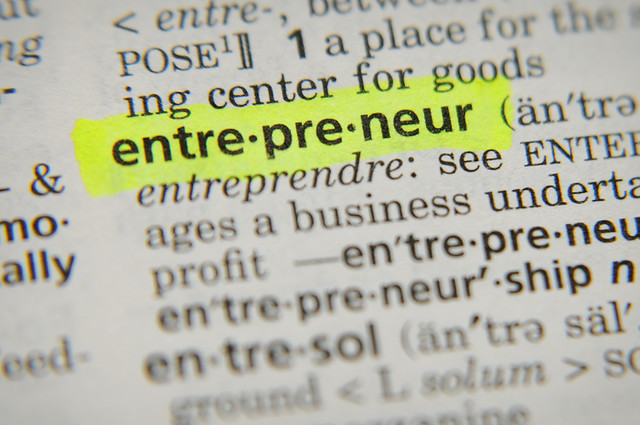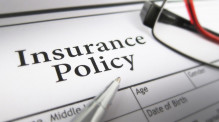Don’t invest unless you’re prepared to lose all the money you invest. NextFin promotes high - risk investments and you are unlikely to be protected if something goes wrong.
Take 2 minutes to learn more.

For those entrepreneurs who manage to overcome the myriad challenges that face them when running their business, they may find themselves at a juncture where they are able to sell their business. It is at this point that Entrepreneurs Relief comes into its own.
In this guide, we break down Entrepreneurs Relief, focusing on how it works, eligibility criteria, and most importantly, how to apply.
Entrepreneurs Relief, which as of 2020/21 has now been renamed Business Asset Disposal Relief is a scheme in which entrepreneurs may gain benefits by selling or giving away their business at a reduced tax rate. In essence, it allows you to apply a reduced rate of 10% capital gains tax on the profits you make when you sell your business.
Viewed as one of the most attractive tax benefits available, you are able to claim up to £1m of entrepreneur’s relief in your lifetime. Claims are unlimited, provided they are within the £1m threshold.
Entrepreneurs relief works by relieving a successful claimant of the amount of tax they would normally have to pay. The profit accrued by the sale of assets are subject to the terms of Capital Gains Tax. In short, when you sell your business, you pay less tax on the first £1m you sell it for.
Capital Gains Tax is only payable on overall gains that exceed your tax-free allowance, which is £12,300. Anything above this and you can be liable up to a rate of 28%, depending on what it is you are disposing.
Entrepreneurs relief applies to any material disposal of business assets. For example, shares and securities. It does not, however, apply to the disposal of investment or non-business assets.
If you are disposing the whole or part of your business, you must have owned the business directly or it must have been owned by a partnership in which you were a member. Entrepreneurs Relief isn’t available on the disposal of assets of a continuing business unless they're a part of the business.
For more information on what deems a qualifying asset, visit the government’s ER Guidance
Crucially, entrepreneur’s relief is available to individuals, not to companies. To be eligible, you need to meet a number of conditions throughout what is referred to as the ‘qualifying period’. This period now equates to two years and ends with the date that the share disposal takes place. As such, the following criteria must be met for the duration of the two-year period:
There are some key differences depending on whether you are selling shares or the business altogether. If you are selling the entirety of the business:
In order to qualify as an employee under HMRC’s guidelines, you need to be able to provide evidence of you working in the business. This can include a written contract, for example.
All claims must be submitted to HMRC which often resembles a claim on your annual Self-Assessment tax return. We greatly recommend that you seek the advice of a financial professional before making a claim to ensure you qualify. To make a successful claim, you need to do so before the first anniversary of the 31 January following the end of the tax year in which the disposal takes place.
As both our Chairman and CEO have reported, there has been much criticism and attention paid to the concept of entrepreneur’s relief. Indeed, such was the case, that during the 2019 general election, the scheme formed a part of both Labour and then Conservative’s manifestos - with the former looking to scrap it entirely, while the latter pledged to reform the scheme.
The coming years will bring with it some changes to entrepreneur’s relief. Whether or not these are radical reforms or merely minor tweaks is yet to be established. As such, it is important to keep up with the latest news surrounding the scheme. We shall continue to closely follow the situation and provide updates on an as and when basis.
Author: Sacha Bright & Oliver Murphy
Disclaimer
To the best of our knowledge, the information we have provided is correct at the time of publishing. Sacha Bright is not a solicitor or accountant and we recommend that you seek professional advice on any topic discussed. Nextfin is not liable for any damages arising from the use of or inability to use this site or any material contained in it, or from any action taken as a result of using the site.
Tagged: entrepreneur finance sme alternative finance funding

Alternative Finance: The Four Types Of Crowdfunding

What is Business Interruption Insurance?

The pros and cons to alternative investment in to private companies via debt or equity

Need Recognition? Here Is A List of Competitions And Awards

What Is The Term Funding Scheme, And Why Is It So Important To Extend It To P2P Lenders?
Alternative Finance: The Four Types Of Crowdfunding
The pros and cons to alternative investment in to private companies via debt or equity
What is Business Interruption Insurance?
Should I Invest in P2P?
Self-Employed to Benefit From Second Stage of Support Scheme
How To Start A Business Post-Covid-19
Business Banking Resolution Service To Open In November
Over 1.2m Businesses Have Benefited From Coronavirus Lending Schemes
What is The Start Up Loan Scheme?
Figures Show 730,000 Job Losses Since Start of Lockdown


As seen in:




